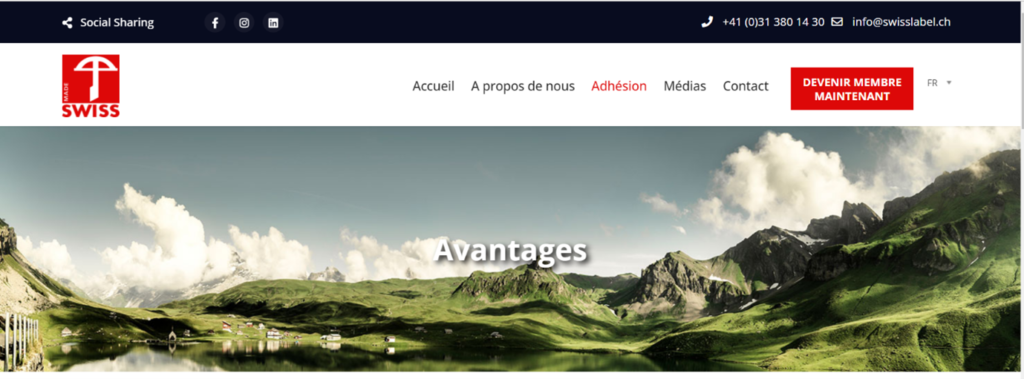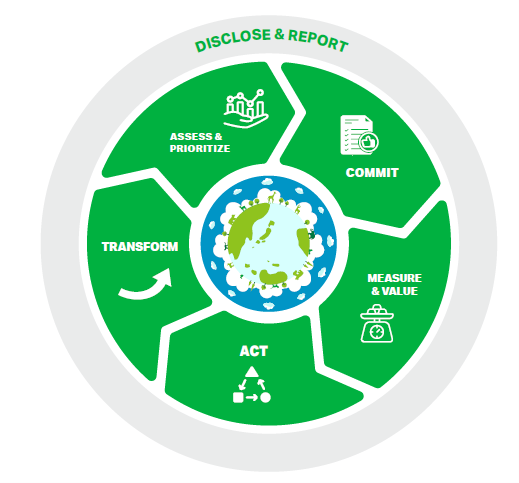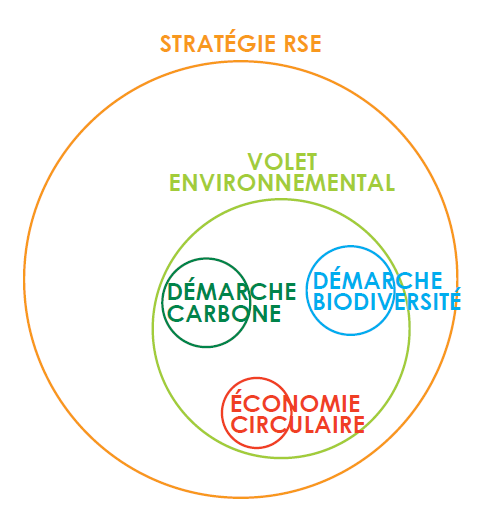
(This text comes from the acts of the Congrès de Société Suisse de Chronométrie Suisse 2022)
Watches and its industry are an important part of the Swiss identity. This sector mainly sells abroad while relying on the values associated with Switzerland: quality, authenticity and nature. Very present in luxury, the watchmaking sector is increasingly applying climate standards. Thus, watch industry, let’s develop your nature!
Watch and nature, a proven couple
Nature and its seasons are a widespread symbol of time and its inevitable march. In jewelry, animals and plants are common creative themes. In watch manufactures, nature is often used to demonstrate the local roots of watch brands, to associate with a certain harmony of the living world or to image performance through the fight against natural elements.
Risks related to the degradation of nature
The loss of biodiversity proves, like the cash flow for the financial state of a company, that the state of nature is deteriorating in an increasing way. It exposes the watch sector to two types of risk. First, those related to dependencies on a service provided by nature, such as e.g. wood, clean water or leather. Secondly, the impacts of factories and their value chain on nature also represent risks. These include, for example, ore mining, pollution or greenhouse gas emissions[1].
To quantify these dependencies, let us take the case of endangered species in Switzerland. These species are indicative of a danger to a service provided by nature. It was calculated that the extinction of these species would force Switzerland to pay 25 billion a year by 2050[2]. To do what? To produce the services that the ecosystems of these species currently provide.
A chemical company has assessed the financial cost of the impacts of its value chain. For the particular case of the destruction of natural areas (“land conversion”), this cost amounts to €15 billion per year[3]. On the day when this cost has to be recorded, following changes in laws and/or customer expectations, it will therefore be 15 billioneuros to be recorded as a liability.
Manufactures, sheltered from the demand for transparency?
For a long time, Swiss watch customers trusted and did not expect companies to have a particular disclosure policy. The importance of Asian customers could change this situation. Deloitte mentions the growing attention of Asian clients [4] to sustainable production. At the same time, some brands are beginning disclosure policies on their sustainability practices[5]. This growing importance of sustainability is accelerating as 72% of brands surveyed by Deloitte in 2021 mention that sustainability has become a topic of financial investment.
The green paradox of “Swiss made” and Switzerland in general
The “Swiss Made” label is a powerful export engine based on a high-quality image. It has also been associated with the green landscapes of the Swiss mountains.

Screenshot of the website of the Swiss label association (© swisslabel.ch, mai 2022)
The link between quality watch and quality landscape is therefore easy and has often been made. In addition to purely marketing considerations, it reflects a discrepancy between reality and the assessment of biodiversity made by the majority of Swiss people[6]. Indeed, Swiss nature is in poor condition, in the plains as well as in the mountains, as a result of biodiversity management that is not exemplary[7]. This association between nature and Swiss quality may demonstrate an attachment to our landscapes but also represents a challenge for a more sustainable management of our natural resources.
Nature and economy, a winning marriage for both
Nature restoration is becoming a necessity for businesses. It could also be a powerful driver to create new incomes. WEF estimated the additional revenues that would be generated by new nature-friendly goods and services. In China, for instance, it will amount to $2 trillion and 88 million jobs by 2030[8] and only in the following three priority sectors: energy, construction-real estate, agri-food. This potential for business opportunities is already measurable. In 2021, consumer goods, and sustainable, accounted for 50% of the growth of this segment while they represent 17% of these goods[9].
A future nature-positive?
While the symptoms of an unbalanced relationship with the natural world (pandemic, decline in agricultural yields, drought, …) are accumulating, a movement that develops a ‘nature-positive’ economy is growing. It is based on the need to stay at 1.5°C of warming and is committed to stopping the degradation of nature by 2030 and restoring nature by 2050[10]. It is supported by the largest association of companies committed to sustainability, the World Business Council for Sustainable Development (WBCSD), which includes 200 of the world’s largest companies.
This goal for a future carbon neutral and nature-positive was declared by the G7 in 2021. It is now part of the economic agenda, as for example, two sessions at the World Economic Forum in Davos 2022, and becomes an issue of the financial world[11]. Finally, the new version of the United Nations Biodiversity Agreement, signed by 195 States (including Switzerland), is incorporated into the new version.

Co-Co-benefits of a restored nature/biodiversity (Modified from © Dasgupta Partha et al., The Economics of Biodiversity: The Dasgupta Review, HM UK Treasury, 2020)
Nature-positive, a boon for the private sector
The nature-positive endeavor finally allows companies to contribute positively to nature. This evolution transforms a risk into a short-term as well as a long-term opportunity: through the development of new products as well as through the evolution of the business model. In addition, it opens the door to new collaborations, with public policies such as NGOs.
Methodologies that accelerate climate commitments
Methodologies to develop a nature-positive approach have been built in recent years. They are comparable to those developed to make a company climate neutral and then net zero: first an analysis of the issues based on an assessment of the biodiversity footprint and / or nature of the company; then a prioritization of the issues that integrates their locations; finally, the setting of targets, the degree of achievement of which is then documented regularly[12].
These synergies between approaches to climate and approaches to nature are needed. Indeed, global warming represents the second cause of destruction of nature[13]. In addition, since the Paris Agreement, companies have strongly supported States to achieve the 1.5°C warming target.
As with the climate, companies can now contribute to a future nature-positive, i.e. with a restored nature by 2050. They can do this by pursuing objectives that respect planetary boundaries (according to Rockström John and Steffen Will. [14]), also known as “science-based targets”.

Components of a Nature-Positive Approach (Modified from © WBCSD, Practitioner guide “What does nature-positive mean for business”, 2020
Innovation for sustainability
Responding to the climate transition is the primary objective of watchmakers’ sustainability[15]. Thanks to its rapid benefits, climate policy has become an important theme of CSR, but remains confined to short-term business issues. Only 36% of French Boards members integrate climate issues into their decisions[16]. Regarding biodiversity, 73% of the Boards do not discuss it. However, corporate sustainability has many more benefits to claim, especially on financial sustainability. Indeed, CSR is a powerful driver of innovation and therefore of value creation[17].

Integration of a nature/biodiversity approach into CSR (© MEDEF, Business and Biodiversity, Keys to Action, 2021)
Innovations to connect with nature
A nature-positive commitment must be based on the involvement of management as well as watchmaking technicians. It must therefore be reflected in corporate strategy as well as in the creation of products. The following examples could reflect this innovation.
Manufacture with a positive impact on biodiversity
Biodiversity is one of the most common indicators for assessing nature. A company could achieve a neutral impact on biodiversity by transforming its material cycles in the production and use of its products.
Immersion experience when buying
The purchase is developed as an experience and nature calls for many emotions. The shops could offer a sensory immersion, with the help of modern technologies, and complement real experiences to live in the regions of the factories or close to the shops.
Watch that promotes well-being
Spending two hours a week in nature keeps you healthy[18]. Thanks to reactive materials (chemical component, light radiation, …), the watch could count the time spent in green. It could also raise awareness of the crazy diversity of life by experiencing a bird song specific to a region depending on the month, for example. Finally, it could enhance its long lifespan by recalling the temporal cycles related to the planet (life of a forest, a tree, …).
Conclusion
The economy is part of the solution for an ecological transition. The Swiss watch industry is a renowned ambassador and also takes advantage of nature, both swiss and elsewhere. The development of an economy with a positive impact on nature opens the door to tremendous transformations. Business models that integrate the circular economy as well as the dematerialization of our societies should also be financial sustainability.
[1] According to data of the Science Based Targets for Nature Network, data 2021
[2] Federal Office for the Environment FOEN, Report on Biodiversity, 2014
[3] BASF, BASF Report 2020, 2021
[4] Deloitte, The Deloitte Swiss Watch Industry Study 2021, 2021
[5] World Wildlife Fund WWF, Environmental rating and industry report for the watch and jewellery industry sector, 2018
[6] gfs-zürich, Survey representative to the population on behalf of Pro Natura on the theme of biodiversity, 2022
[7] OECD Environmental Exams of the OECD, Switzerland, 2017
[8] World Economic Forum WEF, Seizing Business Opportunities In China’s Transition Towards a Nature-positive Economy, 2022
[9] NYU Stern Center for Sustainable Business, Sustainable Market Share Index™2021 Report, 2022
[10] Harvey Locke et al., A Nature-Positive World:The Global Goal for Nature, 2020
[11] Mirjam Staub-Bisang and Martijn Wilder AM (2022), Putting Nature at the Heart of the Global Financial System, web article on weforum.org
[12] Science Based Targets Network, science-based targets for nature, 2020
[13] Intergovernmental Science-Policy Platform on Biodiversity and Ecosystem Services IPBES, The global assessment report, 2019
[14] Rockström J. et al., A safe operating space for humanity, in nature Vol. 46, 24 septrember 2009.
[15] Deloitte, The Deloitte Swiss Watch Industry Study 2021, 2021
[16] IFA-Orse-PwC, CSR integration in the Boards decisions, 1st baromètre, 2022
[17] Ram Nidomolu et al., Why Sustainability Is Now the Key Driver of Innovation, web article in the Harvard Business Review, 2009
[18] Matthew P. White et al., Spending at least 120 minutes in nature is associated with good health and wellbeing, Sci Rep. 2019

Recent Comments